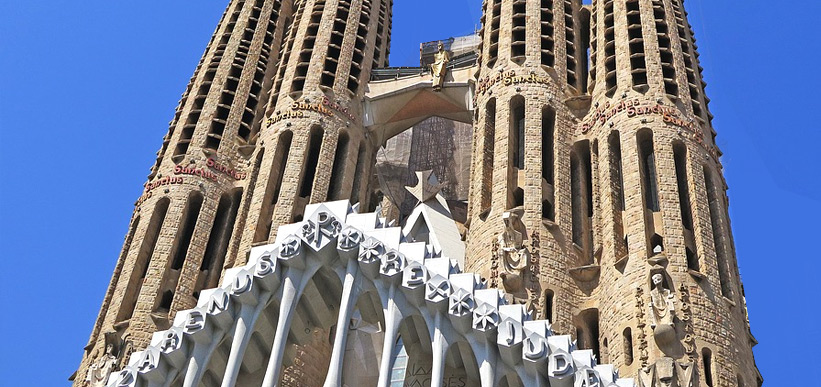Europe has some grand buildings that date back several centuries. More than their sheer size, what would really amaze you is the architecture of those buildings. Different styles of architecture have been used at different times in history to create some magnificent structures in Europe. Most of them were incorporated in cathedrals and the massive palaces of the reigning monarchs.
In recent times, these awe-inspiring buildings have become major tourist attractions. Over the years, many individuals have toured Europe just to witness the grandeur of the structures. Now, let’s take a look at a few of these fascinating buildings:
1. Sagrada Familia (Barcelona, Spain)
Such is the scale of this building that its construction continues even to this day. Work on this enormous cathedral began in the late 19th century. Its unique design was created by the legendary architect, Antoni Gaudi.
The cathedral has the influence of Gothic and Art Noveau architectural styles. The inspiration for this cathedral came from a bookseller known as Josep Maria Bocabella. He began building the cathedral’s apse crypt with the help of donations.
He had received donations from the members of the Spiritual Association of Devotees of St. Joseph. The architect with whom he had begun work on this structure resigned. After his resignation, Gaudi resumed the unfinished work, but with an entirely different style of architecture.
2. Colosseum (Rome, Italy)
This superstructure was built on the orders of Emperor Vespasian during the 1st century. It has been built in accordance with the ancient Roman architecture. Upon analyzing further, one can find Doric, Corinthian, and Ionic influences in the structure. The ground floor comprises columns that are a Roman interpretation of the Doric style.
You’ll find an Ionic style reflected in the semi-columns of the second floor. The columns on the third floor have been built in the Corinthian style. This giant structure took almost a decade for its completion. Its grand opening was celebrated with a festival of a hundred days of games.
3. Notre Dame (Paris, France)
This massive cathedral has been built in the Medieval Gothic architecture. It features pointed arches, gargoyles, sharply-pointed spires, and clustered columns. The French name for this cathedral is ‘Notre Dame de Paris’, which means ‘Our Lady of Paris’. It is among the first Gothic cathedrals in the world.
Work on this building began in 1163 and took more than 300 years to complete. You’ll see variations in architectural styles in some of its parts. This is an indication of the length of time that was taken to finish the structure.
4. Neuschwanstein Castle (Schwangau, Germany)
Built in a Romanesque Revival style, this hilltop castle comprises round towers with cone-shaped roof. It also features low arches over doorways and arcades. The columns and pilasters have spirals and leaf designs. This gigantic structure was inspired by southern Germany’s Hohenschwangau Castle to a great extent.
King Ludwig II of Bavaria had originally commissioned this castle. It was more of a grand palace, which Ludwig funded with his personal fortune. Inspiration for building this castle came from two journeys that he made in 1867. The first was to Wartburg Castle and the second was to Chateau de Pierrefonds.

